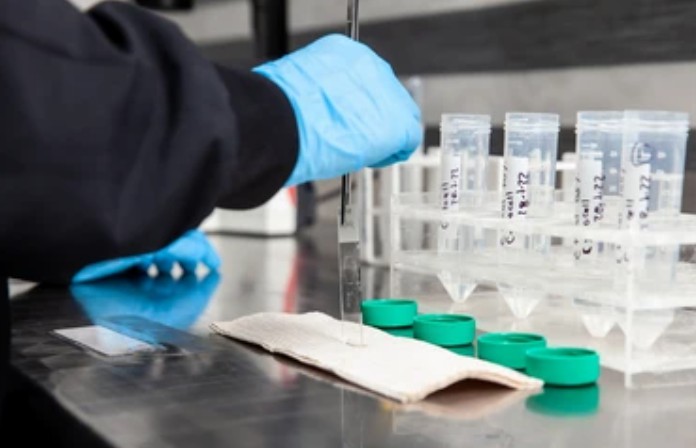Reagents Used in FISH Experiments
Fluorescence in situ hybridization (FISH) is a powerful molecular biology technique that allows the visualization and mapping of specific DNA sequences within cells and tissues. It has a wide range of applications in research, clinical diagnostics, and genetic counseling.

Reagents in FISH and Their Functions
- Probes. They are crucial components in FISH experiments, including whole chromosome painting probes, locus-specific probes, centromeric probes, and telomeric probes. These probes are labeled with fluorescent dyes and are used to identify specific sequences within the cell. The choice of probe is critical for the success of the experiment as it determines the specificity and sensitivity of the FISH assay.
- Denaturation solution. The denaturation solution plays a pivotal role in FISH experiments. It is used to denature the target DNA and probe, preparing them for hybridization. The denaturation step is crucial as it ensures that the DNA strands are single-stranded and capable of forming hybrids with the probe.
- Hybridization buffer. The hybridization buffer provides optimal conditions for the hybridization of the probe DNA to the target DNA. It contains components that facilitate the annealing of the probe to its complementary sequence within the sample. The composition of the hybridization buffer is carefully designed to promote specific and efficient hybridization while minimizing non-specific binding.
- Wash buffers. They are essential for removing unbound or nonspecifically bound probe DNA after the hybridization step. They help to eliminate background noise and enhance the signal-to-noise ratio of the FISH assay. The choice of wash buffers and the washing conditions are critical for achieving high-quality FISH results.
- Counterstain and mounting medium. After hybridization and washing, counterstaining with fluorescent dyes such as DAPI is often performed to visualize the cell nuclei. Additionally, mounting media are used to preserve the FISH signals and prepare the samples for microscopic analysis.
Quality Control in FISH Experiments
Quality control is a vital aspect of FISH experiments, ensuring the accuracy and reliability of results. In FISH, quality control encompasses various measures to validate the performance of reagents and the overall experimental process.
Probe validation is a critical component of quality control in FISH experiments. It involves the assessment of probe specificity, sensitivity, and signal intensity. Validating the probe ensures that it accurately hybridizes to the target DNA sequences, without non-specific binding or cross-reactivity with other sequences. This is achieved through comparative genomic hybridization and validation assays, which verify the specificity of the probe under varying experimental conditions.
Furthermore, signal evaluation is crucial in quality control. This involves assessing the intensity and specificity of the fluorescent signals generated by the probe. Quantitative analysis of the signal intensity, background noise, and signal-to-noise ratio is essential for ensuring accurate interpretation of the FISH results.
Troubleshooting in FISH Experiments
- Weak or nonspecific signals. This can be attributed to suboptimal hybridization conditions, such as temperature, pH, or salt concentration. To address this, optimization of the hybridization conditions may be necessary, including adjustments to the hybridization buffer composition and incubation parameters. Furthermore, probe degradation or insufficient labeling can result in weak signals, emphasizing the significance of thorough probe validation and handling procedures.
- High background fluorescence. This can arise from inadequate washing steps, leading to the retention of unbound or nonspecifically bound probe DNA. By optimizing the wash buffer composition and washing parameters, background fluorescence can be minimized, resulting in an improved signal-to-noise ratio and clearer FISH results.
- Probe specificity and cross-reactivity. Careful probe design and validation are essential to ensure that the probe binds specifically to the target DNA sequences of interest. Cross-reactivity with related sequences must be rigorously evaluated and addressed to prevent misleading results.
Creative Bioarray Relevant Recommendations
Creative Bioarray is dedicated to providing high-quality reagents for FISH experiments. With a focus on precision and reliability, we offer a comprehensive range of specialized reagents essential for the visualization and analysis of specific DNA sequences within biological samples.
| Cat. No. | Product Name |
| FREA--73 | FISH Pretreatment Reagent Kit (cell culture) |
| FREA--74 | FISH Pretreatment Reagent Kit (peripheral blood) |
| FREA--75 | FISH Reagent Kit (bacterium) |
| FREA--80 | FISH-Tissue Implementation Kit |
| FREA--81 | FISH Pretreatment Reagent Kit |
| FREA--82 | FISH Digestion Kit |
| FREA--85 | FISH Reagent Kit |
| FFAC-20 | FISH Slides |
| FFAC-21 | FISH Coverslips |
View our full range of FISH reagents and find what you need!